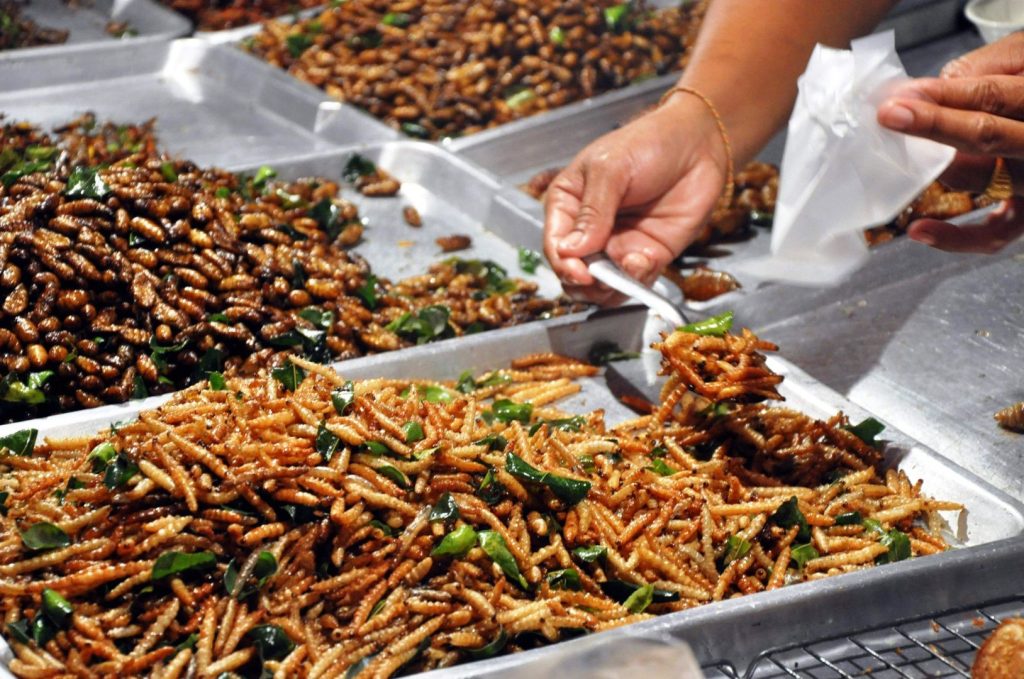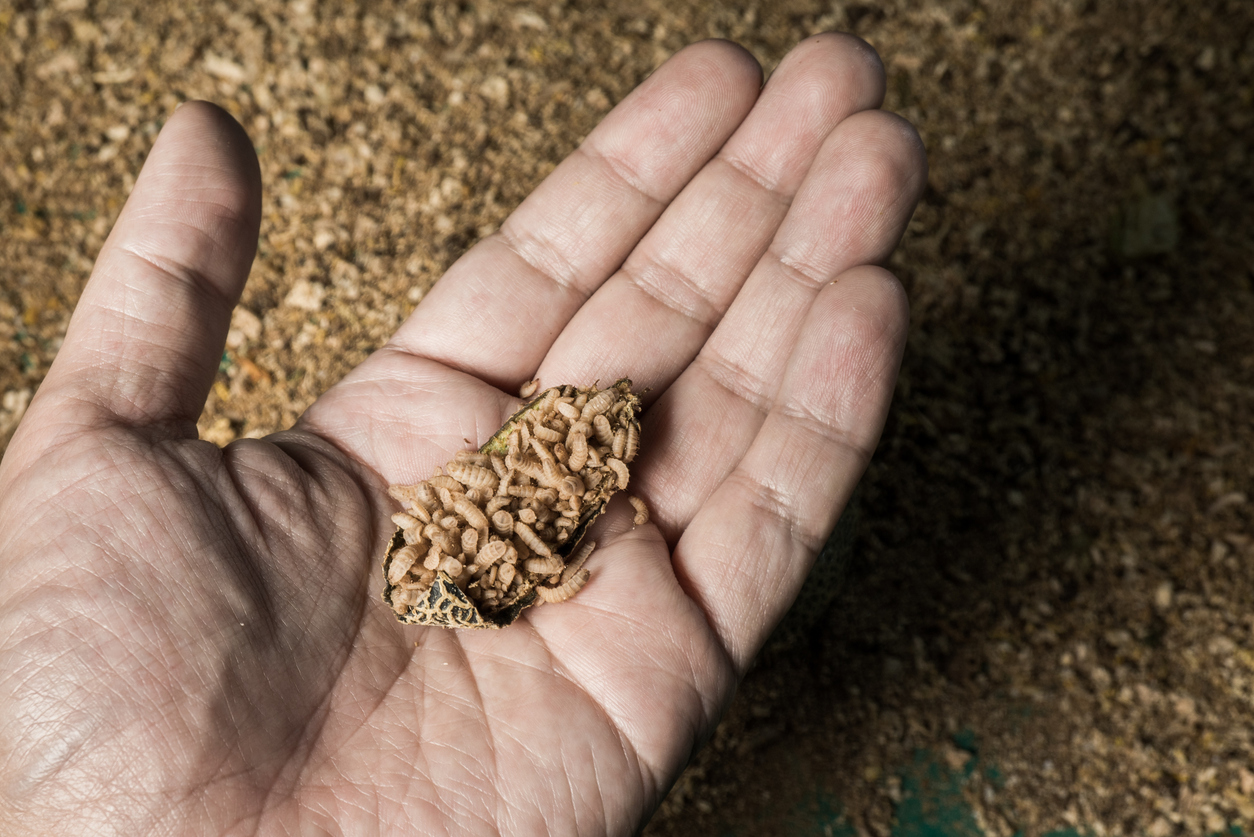Food Insecurity in Africa: Can Insect Consumption Bridge the Protein Gap?
Insect Farming and Food Security
Africa is the second largest continent, with a population of around 1.49 billion people, which is expected to increase to 2.5 billion by 2050 (Guine et al., 2021). This increase in population will lead to a rise in food demand and food scarcity or shortages. Sustainable alternative food sources need to be explored to cover these increased needs. However, this requires more land and water, which are not abundant (Imathiu,2020; Fiho, 2022). Entomophagy appears to be one of the strong solutions.
What is Entomophagy?
Entomophagy is the scientific term used to describe the consumption of insects by humans. Insect consumption goes way back to the early ages when early men consumed insects such as Grasshopper, Ground beetles, Caterpillars, Termites, African palm weevils, and Cockroaches as food or meat substitutes.
Nowadays, insects are consumed in different African countries as food, snacks, or side dishes. The rise in the cost of animal production and the increased sensitivity of people to animal welfare have increased the cost of beef, chevron, and pork, widely known as the primary protein sources. This makes insects a good substitute for meat and a great source of protein.
Africa has a large population of edible insects, estimated to be around 1,000 species, which can improve food security and nutrition. These insects have been part of traditional African diets for ages, especially in low-income households, and lack resources. The consumption of insects provides a sustainable source of food, income, and nutrition. Edible insects can help address some of the world’s challenges today. In particular, they can help to reduce poverty, eliminate hunger, and improve health and wellbeing, all of which are the focus of the first three goals of the SDGs (Moruzzo et al., 2021).
Insect farms in different regions depend on the native insect species, with South Africa having more advanced insect farms and palm weevil larvae farms widespread in West Africa, especially Ghana and Cameroon. In East Africa, Kenya has been positioned as an insect hub. Several farms already produce different insect species, mostly crickets, Black soldierflies, and mealworms (Kipkoech et al., 2022).
Benefits of Insect Consumption as a Source of Protein in Africa
Nutritional Value of this alternative protein source
Edible insects have a higher protein content than chicken or beef, which could help tackle the protein deficiency problem in Africa. In addition to being a source of protein, edible insects can also provide other essential nutrients, such as vitamins, minerals, and fatty acids (Newton et al., 2022).
For example, caterpillars provide a significant source of protein during the rainy season in the Central African Republic.
An Environmental Sustainable Solution
Insect farming requires fewer resources such as water, land, and feed than livestock production. Insects produce less waste and greenhouse gas emissions, which helps reduce environmental pollution.
Economic Opportunities of Insect Farming
Insect farming is a viable source of income for local communities, especially in areas where traditional farming methods are not as effective. This can help to create jobs and improve living standards in these communities. It can also provide opportunities for entrepreneurship and innovation as new products and technologies are developed around insect farming (Klaus & Yukiko, 2021).
Cultural Acceptance
In some African countries, insects have become a traditional food source. This helps to preserve indigenous culinary practices. For example, edible locusts and grasshoppers are widely consumed as snacks in northern Nigeria.
Reduced Food Insecurity
Investing in insect farming is another way to curb food insecurity in African countries, as food production has been diversified, and a reliable and affordable source of protein is provided.

Challenges of Insect Consumption as a Source of Protein in Africa
Although there are many benefits to eating insects, some barriers exist to making them more widely available as a food source. Some of these challenges include the following;
- Anthropogenic Factors
Anthropogenic factors such as deforestation, land development, application of pesticides, pollution, etc can impact insect population and their availability for consumption.
- Prejudice and acceptance of insects as food
Despite the nutritional value of consuming insects, their acceptance and utilization are not guaranteed, especially in communities with no known history of insect consumption.
- Allergens
Edible insects can cause allergic reactions, just like any other protein-containing food. Some proteins found in insects are Arginine kinase, Alpha-amylase, and Tropomyosin, which are known to trigger allergic reactions in some people (Klaus & Yukiko, 2021).
- Food Safety
Inadequate knowledge and training make it hard for insect collectors to engage in insect farming because collected insects are sometimes improperly processed. This can compromise food safety, which can harm human health and wellbeing.
Proper collection/rearing, sorting, and washing would ensure the removal of physical contaminants. Scientists reported that microbial safety evaluations have shown that edible insects are safe for human and animal consumption as long as all the precautions in handling food and feed products are adhered to. Unfortunately, for wild harvested insects, nature determines the production process, and there is a need for a better framework for handling. Studies have shown increased microbial contamination is closely associated with handling (Nganga et al.,2019).
Potential solutions
Effective communication on the benefits of eating insects or incorporating them into common food items instead of marketing whole insects will greatly help overcome public reluctance to use edible insects as food (Derler et al.,2021). Additionally, investment in the industry, like other livestock industries, will significantly increase its acceptability. Furthermore, investing in research into insect domestication, rearing, harvesting, and processing will ensure the continuity of this novel industry (Derler et al.,2021). Kenya has already published standards for edible insect harvesting and handling (KeBS, 2020).
In addition, increasing public awareness about the benefits of insect farming, providing training for interested farmers and collectors, and providing starter kits to help farmers get started would help promote insect production and safe consumption. These measures would encourage more people to get involved in this growing industry and ensure that insects are produced and processed safely and sustainably. Before edible insects can be widely introduced into diets, it is important to understand the potential risks and to develop methods for preventing or treating allergic reactions.
Conclusion
In conclusion, while insect consumption holds great promise for addressing food security and sustainability issues in Africa, addressing challenges related to cultural acceptance, regulation, and infrastructure will be crucial for realizing its benefits on a larger scale. With concerted efforts from governments, communities, and stakeholders, insect consumption can emerge as a valuable and sustainable solution to protein needs in Africa.
References
Derler, H., Lienhard, A., Berner, S., Grasser, M., Posch, A. and Rehorska, R., (2021). Use them for what they are good at: mealworms in circular food systems. Insects 12: 40. https://doi.org/10.3390/
Filho, W.L., Setti, A.F., Azeiteiro, U.M., Lokupitiya, E., Donkor, F.K., Etim, N.N., Matandirotya, N., Olooto, M.F.,Sharifi, A., and Nagy, G.J. (2022). An overview of the interactions between food production and climate change. Science Total Environment. 838, 156438. [Google Scholar]
Guiné, R.P., Correia, P., Coelho, C., and Costa, C.A. (2021). The role of edible insects to mitigate challenges for sustainability. Open Agriculture.36. [Google Scholar]
Imathiu, S. (2020). Benefits and food safety concerns associated with consumption of edible insects.18, 1–11. [Google Scholar]
Kenya bureau of standards (KeBS), 2020. Production and handling of insects for food and feed – code of practice. Kenya Bureau of
Standards, Nairobi, Kenya, 14 pp. Available at: https://tinyurl.com/25nvbzbh.
Kipkoech, C., Jaster-keller, J., Gottschalk, C., Wesonga, J., and Maul, R.,(2022). African Traditional use of edible insects and challenges towards the future trends of food and feed. Journal of Insects as food and feed.9 (8): 965-988.
Lange, K., and Nakamura, Y. (2021). Edible insects as a source of food bioactive and their potential health effects Journal of Food Bioactive,14 (2021), pp. 4-9, 10.31665/JFB.2021.14264.
Moruzzo, R., Mancini, S., and Guidi, A. (2021). Edible insects and sustainable development goals.12, 557. [Google Scholar].
Newton R., Walter L., Gaathier M., Basil M., and Cleophas V. (2022) Edible Insects Consumption in Africa Towards Environmental Health and Sustainable Food Systems: A Bibliometric Study.
Nganga, J., Imathiu, S., Fombong, F., Ayieko, M., Broeck, J.V. and Kinyuru, J., (2019). Microbial quality of edible grasshoppers (Orthoptera: Tettigoniidae): from wild harvesting to fork in the Kagera Region, Tanzania. Food Safety 39: e12549. https://doi.org/10.1111/jfs.
Further reading
Exploring the Benefits and Applications of Black Soldier Fly Farming
Insect Meal in Sustainable Animal Feed
Choosing the right species for mass production of insects as animal feed










































































